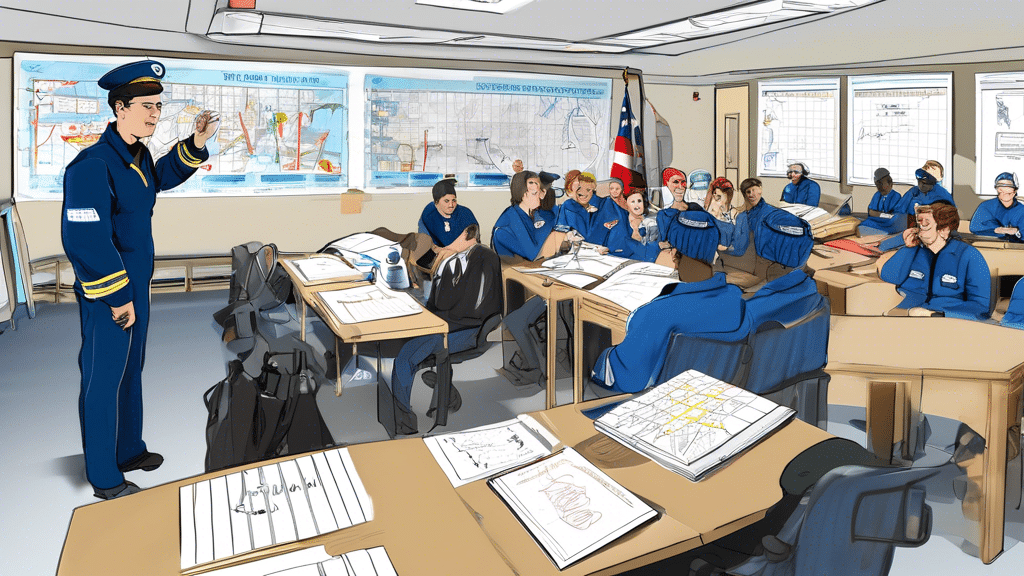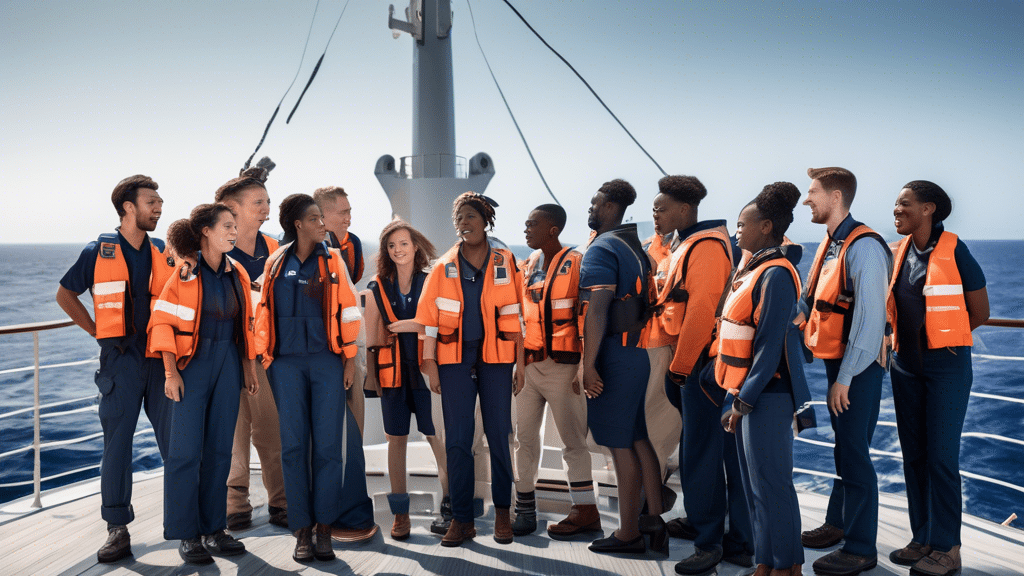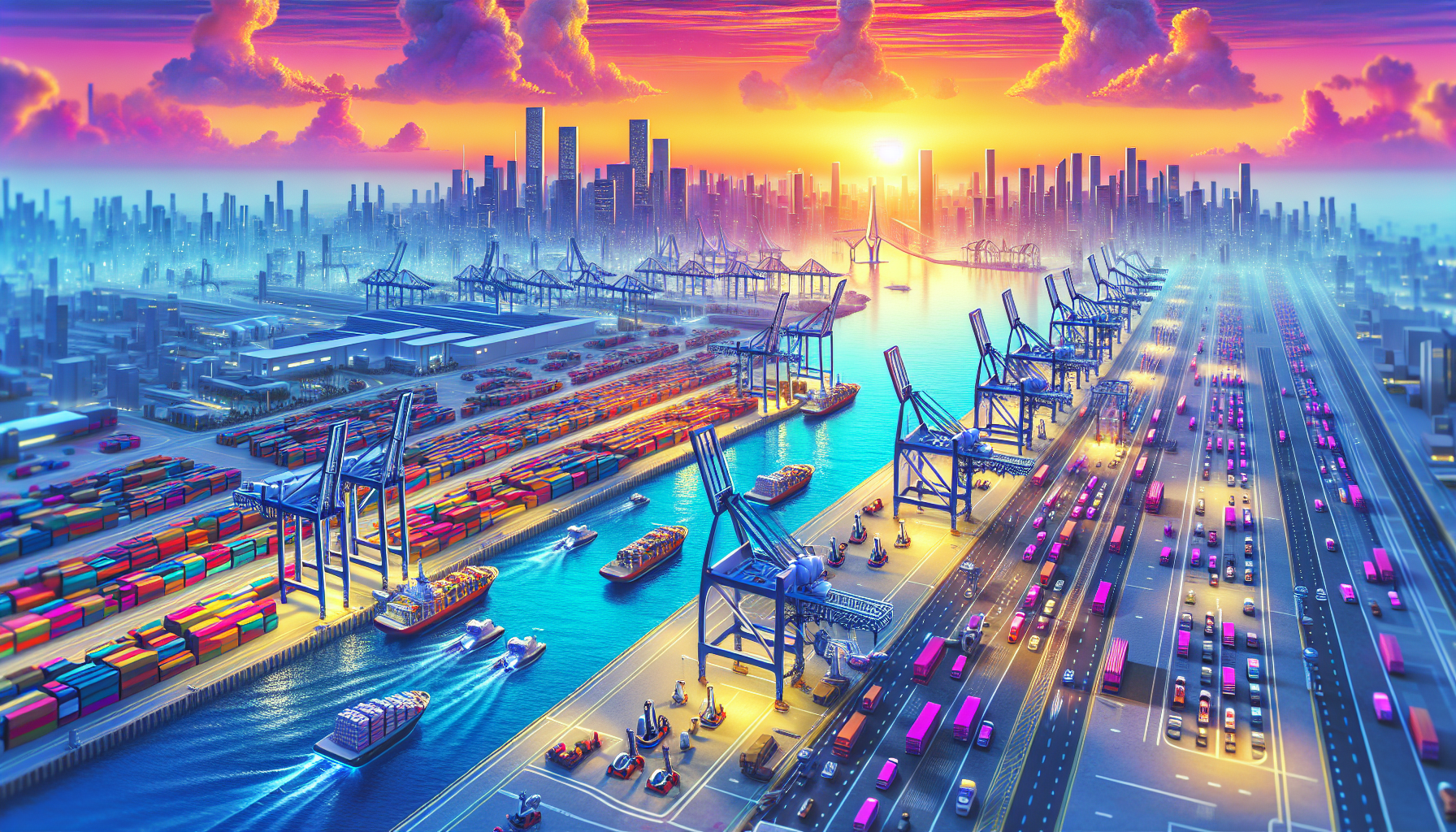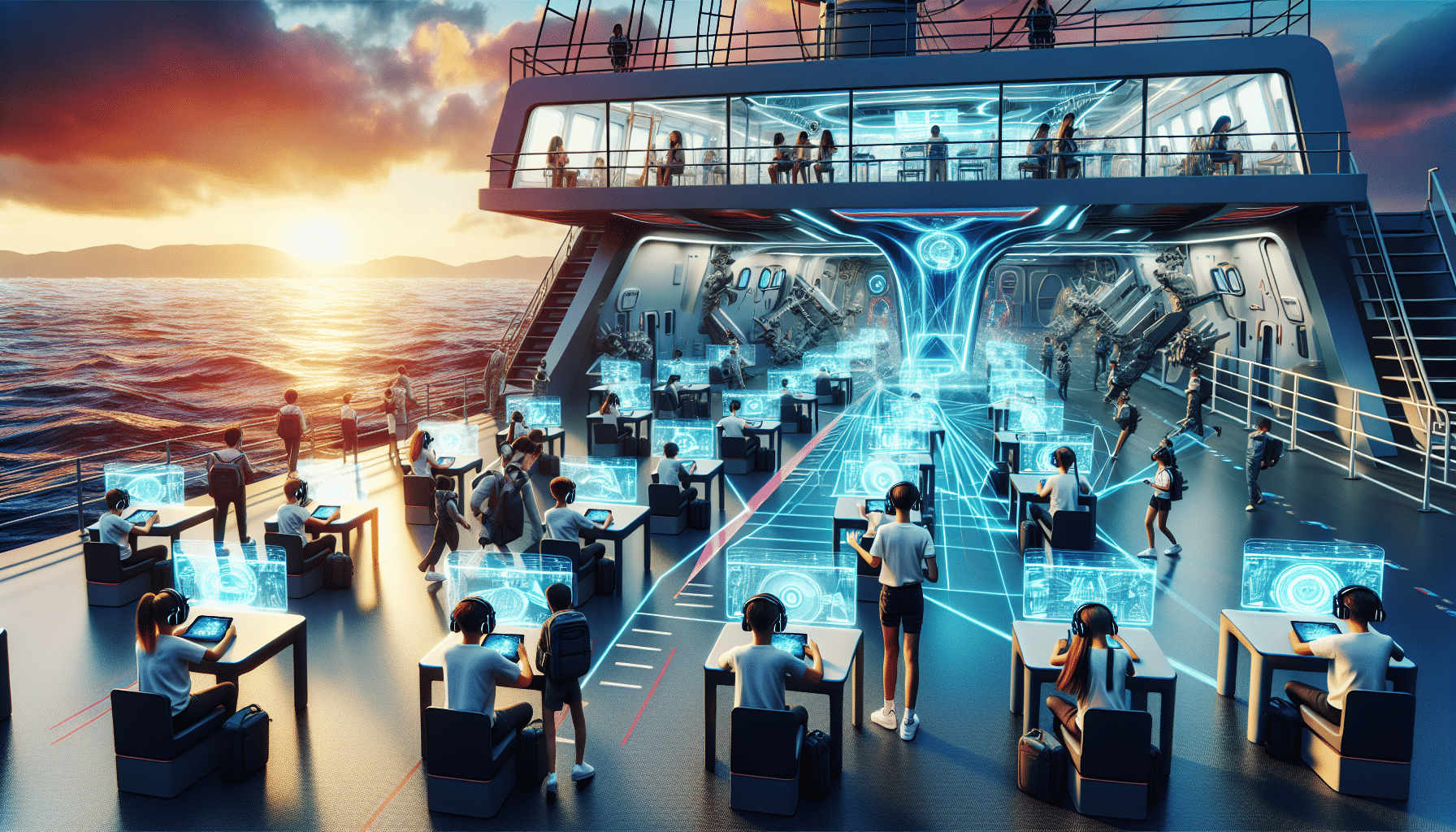Embarking on a career in the maritime industry opens up a world of opportunities that span across the globe’s oceans and ports. For those new to this vast and dynamic field, understanding the industry’s multifaceted framework is essential. The maritime industry is a critical component of global trade, encompassing a variety of roles and responsibilities that ensure the seamless movement of goods across international borders. From shipping and logistics to port operations, each sector plays a pivotal role in maintaining the flow of commerce and sustaining economic growth worldwide.
Whether you aspire to navigate the high seas or manage complex logistical chains onshore, your initial journey in the maritime sector starts with acquiring the right skills and certifications. The industry demands a unique blend of technical knowledge, practical experience, and regulatory compliance, making it imperative for newcomers to invest in proper training and education. Entry-level positions offer a gateway to gaining valuable experience and understanding the operational intricacies of maritime activities. With dedication and a strategic approach to career development, the maritime industry promises a rewarding path brimming with opportunities for advancement and specialization.
Understanding the Maritime Industry: A Beginner’s Overview
Introduction to the Maritime Industry: Roles and Responsibilities
The maritime industry is a vast and multifaceted domain, integral to global trade and economic growth. When venturing into this sector, it’s essential to have a comprehensive understanding of the various roles and responsibilities that exist within it. The maritime industry isn’t limited to just seafaring; it encompasses a broad spectrum of onshore and offshore activities. Professionals in this industry work collectively to ensure the efficient movement of goods, safety of operations, and adherence to international standards and regulations.
Key roles can range from deck officers and marine engineers, who are directly involved in ship operations, to logistics coordinators and port managers, who oversee the supply chain and port functionalities. Deck officers are responsible for navigating the ship, maintaining safety equipment, and overseeing cargo operations. Marine engineers, on the other hand, focus on the mechanical and electrical systems of the vessel, ensuring they are functioning correctly. Together, these roles are vital in ensuring that maritime operations run smoothly, safely, and efficiently.
Onshore, the roles and responsibilities can be equally diverse. Port authorities, shipping companies, maritime lawyers, and customs officers are just a few examples of those who work tirelessly behind the scenes. Port authorities manage the operations within port facilities, ensuring that the docking, loading, and unloading of vessels are completed efficiently. Shipping companies organize the global transportation of goods, coordinating with various stakeholders to guarantee timely and safe deliveries. Maritime lawyers specialize in laws and regulations related to maritime operations, providing guidance and resolving disputes. Customs officers ensure that all goods entering and leaving a country adhere to national and international regulations.
Each of these roles demands specific skills and knowledge, which are vital for maintaining the industry’s high standards of operation. By understanding the breadth and depth of the maritime industry, newcomers can better navigate their career paths and identify areas where they can contribute most effectively.
Key Sectors in Maritime: Shipping, Logistics, and Port Operations
The maritime industry is divided into several key sectors, each playing a critical role in the global supply chain. The three main sectors include shipping, logistics, and port operations. Let’s delve deeper into what each of these sectors entails and how they interlink to form the backbone of the maritime industry.
Shipping: The shipping sector is the core of the maritime industry, involving the transportation of goods and passengers across the world’s oceans and seas. It is a highly specialized field, requiring skilled personnel and advanced technology to manage operations effectively. This sector is responsible for the movement of bulk commodities like oil, coal, grains, and manufactured goods. Vessels are designed for specific cargo, such as container ships for general cargo, tankers for liquid bulk, and bulk carriers for dry bulk goods. Shipping companies must adhere to rigorous international regulations and standards, including the International Maritime Organization (IMO) conventions, to ensure safety and environmental protection.
Logistics: Logistics in the maritime industry involves the planning, implementation, and control of the movement and storage of goods from the point of origin to the point of consumption. It encompasses various functions such as warehousing, inventory management, transportation, and supply chain coordination. Efficient logistics are crucial for minimizing costs, reducing transit times, and improving customer satisfaction. Professionals in this sector use sophisticated tracking systems and logistics software to manage and optimize the flow of goods. In a globalized economy, logistics personnel must also be well-versed in international trade regulations, customs procedures, and risk management.
Port Operations: Port operations are another cornerstone of the maritime industry. Ports are the hubs where maritime and land transport intersect, playing a vital role in the global supply chain. Activities within ports are varied and involve several stages, including berth scheduling, cargo handling, storage, and distribution. Ports must be equipped with modern infrastructure and technology to handle the increasing volume of maritime traffic efficiently. Port authorities and terminal operators work diligently to ensure that vessels are loaded and unloaded quickly, thereby minimizing delays. Security is also a key concern, with ports employing stringent measures to prevent unauthorized access and ensure the safe passage of goods.
In conclusion, the shipping, logistics, and port operations sectors are interdependent and collectively ensure the smooth functioning of the maritime industry. Understanding the nuances of each sector can guide new entrants in identifying where their skills and interests align best. By gaining a holistic view of these key sectors, one can appreciate how the maritime industry operates as a unified system dedicated to supporting global trade and economic growth.
https://www.virtualmaritime.academy/vma-courses/
Navigating Your Initial Journey: Essential Steps for Newcomers
Essential Skills and Certifications: What You Need to Know
Embarking on a career in the maritime industry requires a fundamental understanding of the essential skills and certifications needed to succeed. The maritime sector is highly specialized and regulated, making it imperative for newcomers to comprehend the qualifications required to thrive.
First and foremost, obtaining a basic maritime safety training certification is crucial. This certification, often referred to as Basic Safety Training (BST), covers essential safety protocols, including firefighting, personal survival techniques, basic first aid, and personal safety and social responsibilities. It’s a mandatory requirement for anyone looking to work on ships and ensures that all crew members are equipped to handle emergencies effectively.
Another key certification is the Standards of Training, Certification, and Watchkeeping (STCW). Introduced by the International Maritime Organization (IMO), STCW sets the baseline for the competency of seafarers globally. For those pursuing roles that require navigation, engineering, or radio communication skills, specific STCW certifications are necessary. These qualifications enhance your credibility and ensure that you meet international standards, making you a more attractive candidate for employers in the maritime industry.
Beyond certifications, developing robust technical skills is essential. Proficiency in navigation, ship handling, and understanding maritime laws and regulations are fundamental for those aiming for operational roles. Similarly, for engineering positions, a strong grounding in marine engineering principles, machinery maintenance, and electrical systems is necessary. Practical skills complemented by theoretical knowledge ensure you’re prepared for the multifaceted challenges of maritime professions.
Moreover, soft skills play a significant role in the maritime industry. Effective communication, teamwork, problem-solving abilities, and leadership are vital, especially in high-pressure environments often encountered at sea. The ability to work harmoniously with diverse crews and navigate cultural differences enhances operational efficiency and safety. Consequently, nurturing these soft skills can significantly improve your job performance and career prospects.
Gaining Experience: Entry-Level Positions and Career Advancement Opportunities
Securing a foothold in the maritime industry often begins with entry-level positions that provide valuable experience and exposure to day-to-day operations. These roles, while sometimes demanding, offer a practical introduction to the industry and are stepping stones for career advancement.
One common starting point is the role of an ordinary seaman (OS). This position involves performing various support tasks, such as maintenance, cargo handling, and deck work. It’s an excellent opportunity to gain hands-on experience and understand the basic operations aboard a ship. By demonstrating a strong work ethic and a willingness to learn, you can advance to more specialized roles, such as an able seaman (AB) or a bosun.
For those interested in the technical side, entry-level positions such as wiper or junior engineer provide a pathway into the engineering department of a ship. These roles focus on supporting the engineering team with machinery maintenance, repairs, and daily operational tasks. Gaining experience in these positions is crucial for anyone aiming to progress towards roles like third engineer or eventually chief engineer.
Another entry point is through maritime academies or cadet programs. These programs combine classroom learning with practical sea time, enabling cadets to acquire the necessary skills and certifications while gaining real-world experience. Cadet programs often lead to officer positions upon successful completion, offering a clear career trajectory for aspiring deck or engineering officers.
Career advancement in the maritime industry is typically structured and merit-based. Continuous professional development and accumulating sea time are vital for progression. Post-entry-level experience, seafarers can pursue advanced certifications and courses that specialize in areas like navigation, vessel management, or maritime law. For example, attending a maritime college or university can provide the necessary academic credentials to facilitate upward mobility into management and leadership roles within the industry.
Networking and mentorship also play crucial roles in career advancement. Building relationships with experienced professionals can provide guidance, support, and opportunities for advancement. Engaging with maritime organizations, participating in industry conferences, and joining professional associations can help you expand your network and stay informed about the latest trends and opportunities in the sector.
Additionally, the maritime industry offers diverse pathways beyond traditional seafaring roles. Opportunities in port operations, maritime logistics, and shipping management provide alternative career avenues. Roles such as port operator, logistics coordinator, or shipping manager require different skill sets but offer the potential for growth and a dynamic work environment.
For those with entrepreneurial ambitions, the maritime sector presents opportunities to start your own venture. From shipping agencies and maritime consultancy firms to maritime technology startups, the industry is ripe for innovation and new business ideas. However, this path demands a thorough understanding of market dynamics, regulatory environments, and operational logistics, underscoring the importance of gaining comprehensive industry experience first.
In conclusion, navigating your initial journey in the maritime industry involves acquiring essential skills and certifications, gaining practical experience through entry-level positions, and continuously seeking opportunities for professional development and networking. This strategic approach will prepare you for a successful and rewarding career in one of the world’s most critical and dynamic industries.
Entering the maritime industry can be both exhilarating and daunting for newcomers. By understanding the foundational aspects, such as the diverse roles and responsibilities within key sectors like shipping, logistics, and port operations, you can better navigate your initial journey. Equipping yourself with essential skills and certifications is crucial, as these credentials open the door to entry-level positions that offer invaluable experience. Embrace every opportunity for career advancement, as the industry is replete with pathways for growth and development. As you set sail on this new adventure, remember that persistence, continuous learning, and adaptability are your best allies in forging a successful and rewarding maritime career.
https://www.virtualmaritime.academy/vma-courses/














